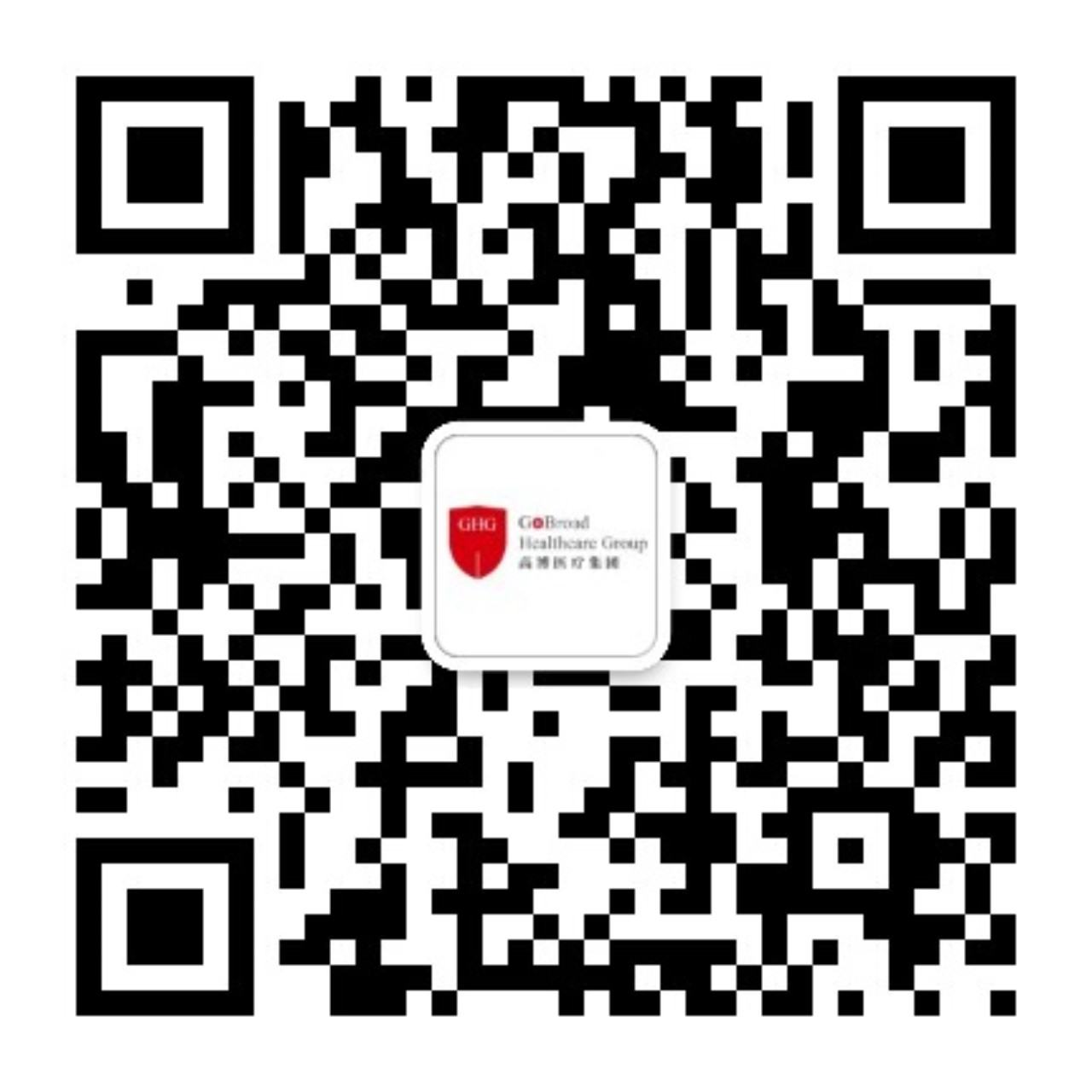Professor Li Chunfu: Making Progress Has Become a Habit,Five Years of Dedication, Thousand Times of Reborn
2024-6-22"Congratulations on a successful discharge!"
On May 10th, during a childlike and festive discharge ceremony, Xiaoyu (a pseudonym), a patient with aplastic anemia, walked out of the transplant unit accompanied by doctors and family members, becoming the 1000th patient to be discharged from the Nanfang-Chunfu Children’s Institute of Hematology, GoBroad Medical Institute of Hematology (Guangdong Center) . Xiaoyu picked up a brush to ceremoniously “dot” the eyes of the institute’s mascot, a little lion. Afterwards, Xiaoyu received his favorite toy and the institute mascot from Professor Li Chunfu, Professor He Yuelin, and his attending physician Dr. He Lan, with a smile returning to his face. Under the watchful eyes of doctors and guests, he slowly walked back to the general ward of the pediatric hematology department. If all goes well, Xiaoyu will be able to go home next week, marking the end of his two-year medical journey.
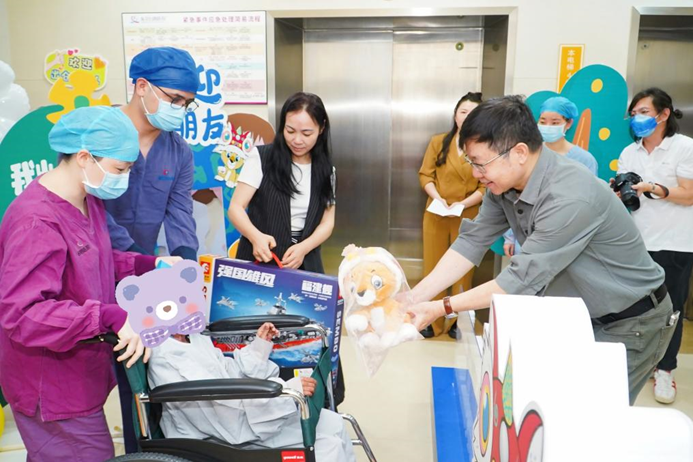
In May 2023, the Nanfang-Chunfu Children’s Institute of Hematology, GoBroad Medical Institute of Hematology (Guangdong Center) celebrated the discharge of its 1000th pediatric transplant patient.
In 2018, Professor Li Chunfu, known as the "Father of Thalassemia," founded the Nanfang-Chunfu Children’s Institute of Hematology, GoBroad Medical Institute of Hematology (Guangdong Center) after his retirement. The institute focuses on the treatment of pediatric hematologic and immunodeficiency diseases and has set a record of "100 days, 100 transplants, 0 deaths." Over the past five years, embarking with a renewed sense of beginning, the Chunfu Institute has rooted itself in Dongguan, upholding the promise that "life is above all else." It provides comprehensive care for children with hematologic and immunologic diseases who come from South China and across the country.
Optimizing Strategies to Create a "Miracle" with a 97% Success Rate
In the field of hematological diseases, hematopoietic stem cell transplantation (HSCT) is widely applied and represents a milestone in the development of treatments for these conditions. Initially, HSCT was primarily used for treating malignancies such as leukemia. However, with the maturation of the technology, the success rates of HSCT have steadily increased, offering new avenues for curing diseases like thalassemia (hereafter referred to as "thalassemia") and aplastic anemia. As early as 1999, Professor Chunfu Li's team completed the nation's first haploidentical transplant from mother to child for thalassemia.
"At that time, the success rate of thalassemia international transplantation was only around 50%, which was too low for a benign blood disorder", remarked Professor Chunfu Li. Dedication to research and over a decade of exploration led to the groundbreaking NF-08-TM protocol, which dropped like a bombshell in the academic circle. This innovation elevated the survival rate of thalassemia patients undergoing allogeneic hematopoietic stem cell transplantation to 90%, marking the world's first study where non-related transplantation achieved a cure rate exceeding 90%. Many patients came seeking treatment because of its fame, with waiting lists extending up to a year for transplantation.
Although the success rate has reached 90%, mistakes, accidents, and deaths are experiences that every doctor may have, as French doctor René Leriche once said, "Every doctor has a cemetery in his heart," and Professor Li Chunfu is no exception. There was an ordinary thalassemia patient whose family could not afford the high cost of transplantation. Professor Li Chunfu took the lead in donating money for him, raised enough funds for transplantation, and performed hematopoietic stem cell transplantation. However, he tragically died due to post-transplant complications. "This incident had a great impact on me and prompted me to establish new clinical treatment protocols, greatly reducing the mortality rate from transplantation infections." Professor Li Chunfu said that modern medicine has limitations, and doctors are not gods. It is impossible to cure every patient discharged from the hospital. Doctors will do their best to treat patients, but there will always be various reasons leading to treatment failure, which requires understanding from patients and their families. Learning from one's mistakes is a form of "redemption."
"You cannot betray the children who have passed away," a family member of a patient told Professor Chunfu Li. "Standing still is a betrayal; only by constantly moving forward can we slightly alleviate the regret in our hearts." Carrying this conviction, even in his sixties, he presented his Co-Transplantation strategy(which is actually consisted of haploidentical stem cell transplantation and a single-dose transfusion of unrelated cord blood twice at the American Society of Hematology Annual Meeting. "An overall survival rate of 97%, a mortality rate of 2%, and a failure rate of 1% – this is unprecedented in the history of thalassemia transplantation. Moreover, in juvenile myelomonocytic leukemia transplants, the overall survival rate reached 91.6%, with an event-free survival rate of 88.4%."
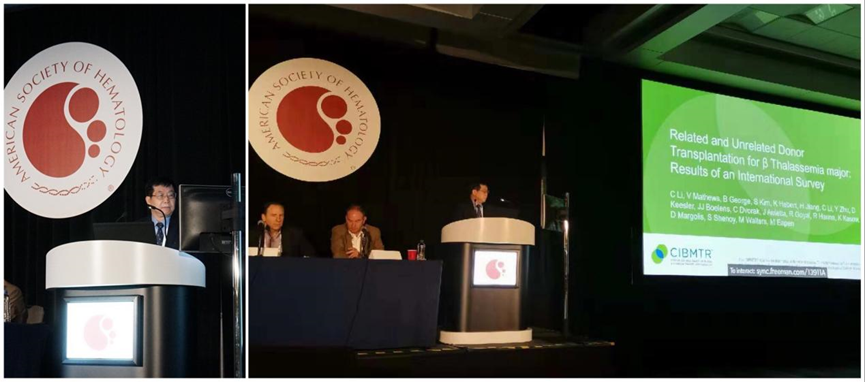
In December 2018, Professor Li Chunfu delivered an oral presentation at the American Society of Hematology Annual Meeting
Never giving up on any patient under my care is my pursuit.
"The 97% success rate is already high, but with a 2% mortality rate and a 1% failure rate. As I watch these vibrant lives gradually slip away, I always feel like there is more I can do, no matter how arduous the journey. Perhaps achieving a 100% success rate is an impossible goal, but we must always strive for it. Throughout my many years in medicine, my sole goal has been to never give up on any patient under my care," said Professor Li Chunfu.
With over 40 years in the medical field and more than 30 years dedicated to hematopoietic stem cell transplantation, Professor Chunfu Li has mastered the intricacies of transplant techniques. Faced with every family of children with blood diseases, every complex case, and every child who has struggled for years to seek treatment. The pledge of " Where health is entrusted, lives are entrusted. " has always echoed his initial intention in medicine. "How can transplant technology be refined to further improve success rates and decrease mortality?" remains the question that preoccupies his thoughts day and night.
Ultimately, Professor Chunfu Li set his sights on the T-cell depleted haploidentical hematopoietic stem cell transplantation (ex vivo T-cell depletion transplant), a technique that had begun to gain traction in Europe. International studies revealed promising results in treating childhood leukemia with this method, achieving a long-term leukemia-free survival rate approaching 70%, with recurrence rates comparable to those of the "Beijing Protocol". Moreover, in foreign research, T-cell depletion held a unique advantage: even in cases of transplant failure, the risk of mortality was significantly lower than those with other transplant approaches.
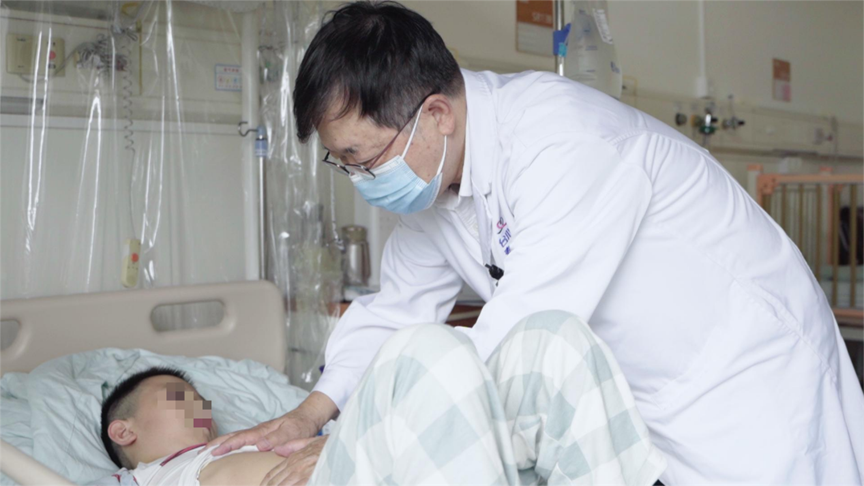
Professor Chunfu Li conducts ward rounds, examining the young patient.
"The low mortality rate after transplant failure caught my attention, and the T cell depletion technique selectively removes unfavorable cells while preserving beneficial ones, reducing the risk of transplant-related complications such as graft-versus-host disease, decreasing post-transplant infections, and speeding up hematopoietic recovery," said Professor Li Chunfu. However, reality struck hard at the onset of his trials. Several patients failed to engraft, and at one point, Professor Li Chunfu even considered giving up, thinking, "Maybe it's better to stop; the success rate of the Co-Transplantation protocol is already quite good." But his tenacious nature refused to accept defeat. He meticulously reviewed the causes of failure, revised the plan for these patients, and proceeded with another round of hematopoietic stem cell transplantation.
After several rounds of exploration, the success rate of using the T-cell depleted (TCD) haploidentical hematopoietic stem cell transplantation technique to treat thalassemia has now reached close to 99%. In patients with acute lymphoblastic leukemia, the overall survival rate can also reach 90%, with a disease-free survival rate of 80%, and no relapse cases have occurred so far. Despite such high success rates, Professor Li Chunfu believes there is still room for improvement in the technique. "Currently, although the success rate of the technique is high, T cell depletion has also led to an increase in viral infection rates. In the future, we plan to reduce the viral infection rate by re-infusing memory T cells," he added.
Guarding Children's Return to Normal Life
"I don't want to sing children's songs anymore. I'm not a little kid. I want to sing Lonely Warrior." With a smile, parents and teachers handed the microphone to the child, softly humming along as they provided backing vocals. The students attending class here are a special group; they were all once patients of blood or immune diseases, seeking medical treatment in various places before finally receiving hematopoietic stem cell transplantation at the research institute, gaining a new lease on life.
"Children with blood diseases often spend many years seeking medical treatment, traveling from place to place. They are not only absent from the classroom but also isolated from their peers," explained Professor Li Chunfu. Establishing a hospital school not only allows them to experience campus life and play with peers but also brings together parents and children after hematopoietic stem cell transplantation, enabling them to encourage and heal each other. "Seeing these post-transplant children so healthy and lively fills us with hope for our own children's future," said one parent awaiting transplantation to a reporter.
The Nanfang-Chunfu Children’s Institute of Hematology, GoBroad Medical Institute of Hematology (Guangdong Center) has a total of 36 transplant wards, where families of patients cheer each other on, eagerly anticipating the moment when their loved ones will step out of the transplant ward and embrace a new life. Xiaoyu, who will soon undergo T cell depletion therapy, will also join this special class and learn and play with other students, laying the foundation for a formal return to school in the future.
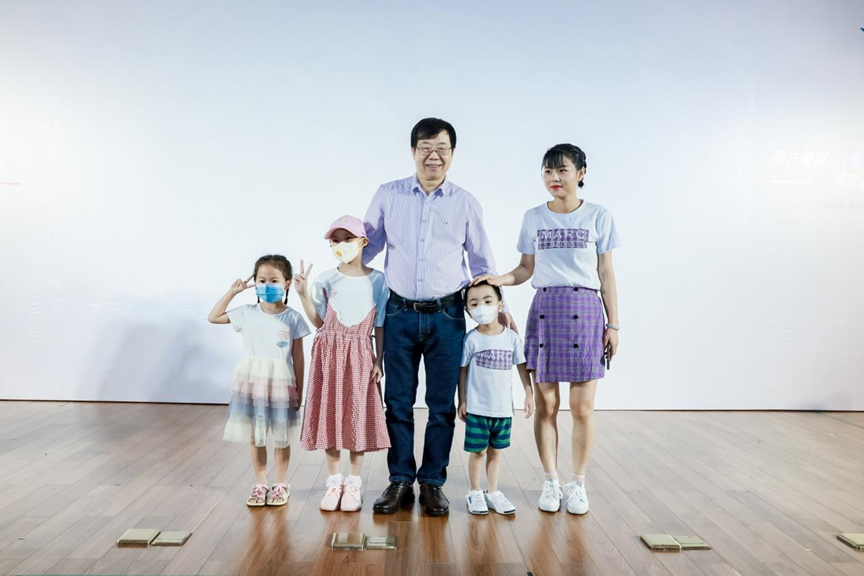
Professor Chunfu Li posing for a photo with a patient after a successful transplant.
Continuously Exploring, Always Striving Forward on the Path of Progress.
With the smooth transplantation of Xiaoyu, the Nanfang-Chunfu Children’s Institute of Hematology, GoBroad Medical Institute of Hematology (Guangdong Center) has successfully discharged 1000 patients in its five years of establishment. " This is a testament to the trust our patients place in us, as well as the outcome of our team's collective efforts. Reaching 1,000 cases marks a new beginning, yet the journey towards advancing transplantation knows no limits." Professor Li Chunfu modestly remarked on the team's achievement of successfully transplanting a thousand cases.
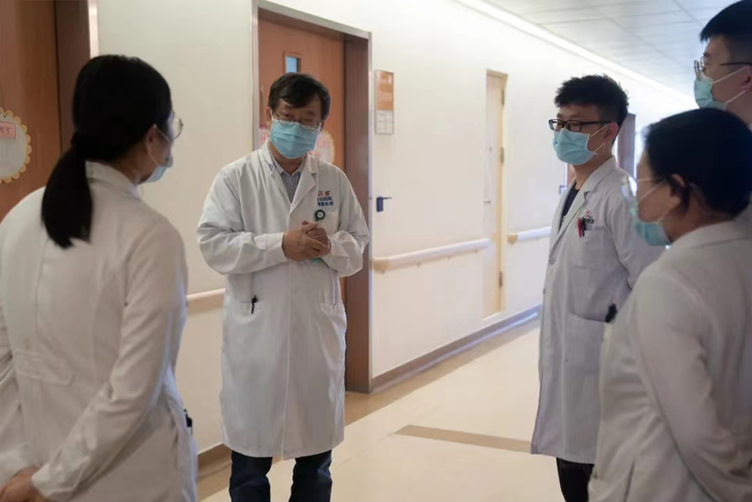
Professor Li Chunfu Mentors Young Doctors
"The Father of Thalassemia" plaque hangs in Professor Li Chunfu's office, but he treats not only thalassemia. Among these 1000 cases of patients, there are both benign hematologic diseases such as aplastic anemia and thalassemia, as well as malignant hematologic diseases such as leukemia. There are also rare immunodeficiency diseases treated in collaboration with the Pediatrics Department of Peking Union Medical College Hospital, such as lysinuric protein intolerance.
Gene therapy to replace hematopoietic stem cell transplantation, gene editing therapy for leukemia, thalassemia, and other technologies have long been on Professor Li Chunfu's agenda.
Continuous exploration and unceasing progress have become habits ingrained in Professor Chunfu Li's being. From thalassemia to malignant blood diseases and immune system disorders, and from transplantation to immunotherapy and gene therapy, he firmly believes that living in an era of rapid medical advancements necessitates running forward and exploring incessantly. Given the broader horizons now open, why not seize the opportunities and ride the wave, putting into practice the principle that "people are paramount, and life comes first"?


